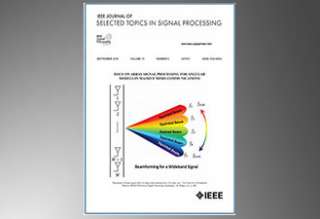SPS Feed
Top Reasons to Join SPS Today!
1. IEEE Signal Processing Magazine
2. Signal Processing Digital Library*
3. Inside Signal Processing Newsletter
4. SPS Resource Center
5. Career advancement & recognition
6. Discounts on conferences and publications
7. Professional networking
8. Communities for students, young professionals, and women
9. Volunteer opportunities
10. Coming soon! PDH/CEU credits
Click here to learn more.
The Latest News, Articles, and Events in Signal Processing

We seek a post-doctoral fellow (PDF) to research machine learning (ML) modeling of cirrhosis disease event and risk evolution. The research will use a large healthcare dataset drawn from ICES’s data repositories (www.ices.on.ca). The PDF will work with Dr. Geoffrey Chan
https://www.ece.queensu.ca/people/W-Y-G-Chan/index.html
and Dr. Jennifer Flemming

The Department of Signal Processing and Acoustics at the Aalto University School of Electrical Engineering invites applications for
ASSISTANT PROFESSOR IN SIGNAL PROCESSING (tenure track)
Detailed call and instructions how to apply at: https://www.aalto.fi/en/open-positions/assistant-professor-in-signal-pro...

The speech technology research group at the IBM T. J. Watson Research Center in Yorktown Heights, NY is seeking research scientist candidates with demonstrated publication records in top machine learning, speech, vision, or natural language processing conferences.

The progress in circuit technology has allowed researchers to think about leveraging spectrum beyond millimeter wave. It is not unreasonable to imagine commodity radios with massive antenna arrays and emerging radio frequency (RF) technologies in the near future. To enable efficient communication with these radios, it is critical to understand hardware constraints at the antennas, the RF and the digital front ends.

We are inviting applications for a Speech and Deep Learning Researcher to work with Prof Thomas Hain and Dr Anton Ragni at The University of Sheffield and ZOO Digital PLC, an innovative international media localisation company with its research and development centre in Sheffield.
Lecture Date: September 15, 2021 -- Virtual Lecture
Chapter: Meghnad Saha Institute of Technology IEEE SPS Student Branch Chapter
Chapter Chair: Biswarup Ganguly
Topic: Graph signal processing: spectral transforms, graph Slepians, non-parametric
surrogate data generation, modularity-based graph signal processing
Lecture Date: June 29, 2021 -- Virtual Lecture
Chapter: Meghnad Saha Institute of Technology IEEE SPS Student Branch Chapter
Chapter Chair: Biswarup Ganguly
Topic: Computational Imaging for Art investigation and for Neuroscience
Manuscript Due: January 15, 2022
Publication Date: 3rd Quarter 2022
CFP Document
Pages
SPS Social Media
- IEEE SPS Facebook Page https://www.facebook.com/ieeeSPS
- IEEE SPS X Page https://x.com/IEEEsps
- IEEE SPS Instagram Page https://www.instagram.com/ieeesps/?hl=en
- IEEE SPS LinkedIn Page https://www.linkedin.com/company/ieeesps/
- IEEE SPS YouTube Channel https://www.youtube.com/ieeeSPS




















